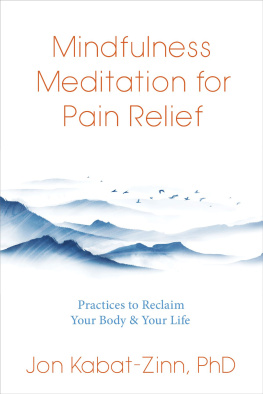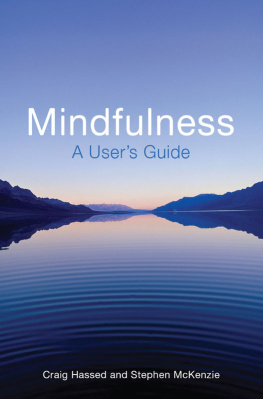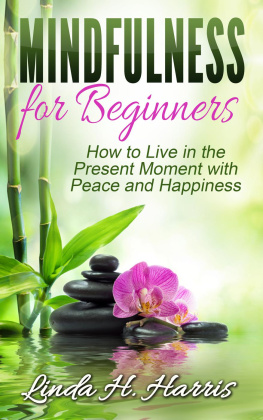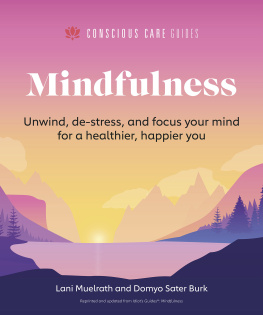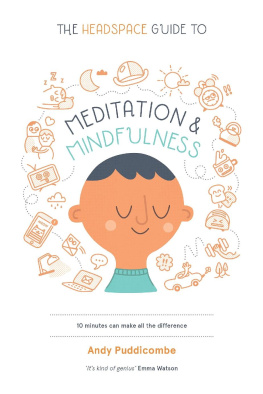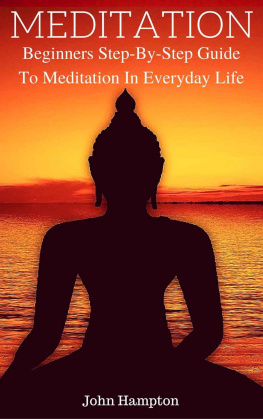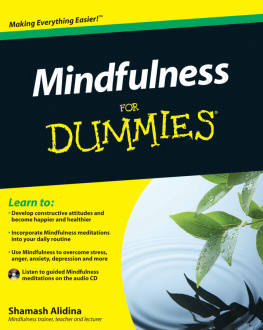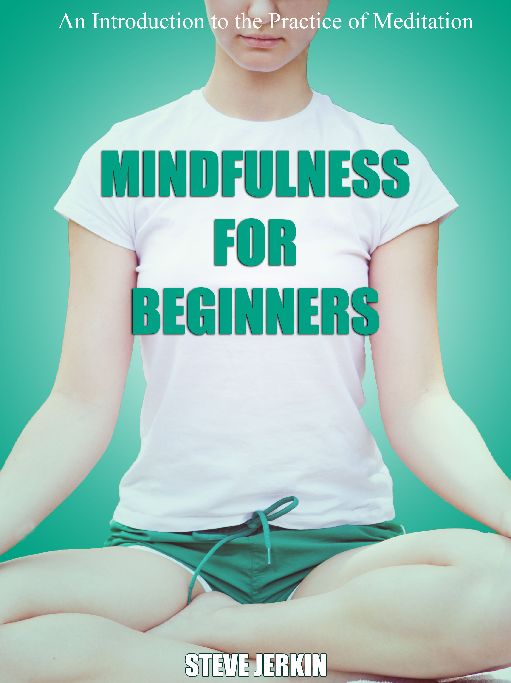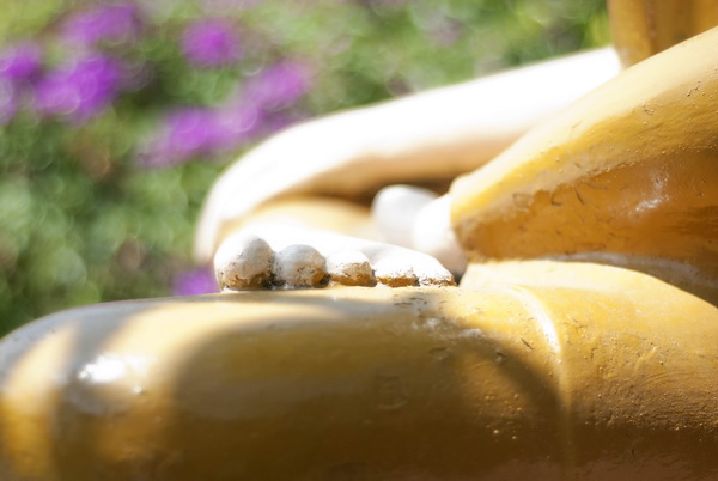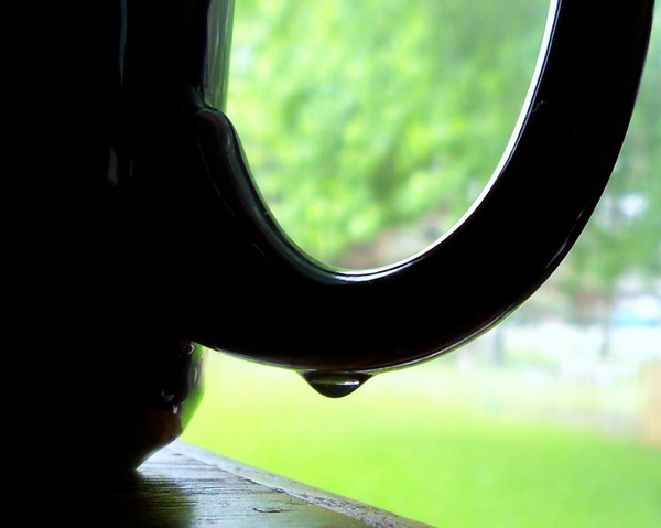MINDFULNESS
FOR
BEGINNERS
BY
STEVE JERKIN
Mindfulness for Beginners:
An Introduction to the Practice of Meditation
2013 by Steve Jerkin
Smashwords Edition
Copyright 2013 by Steve Jerkin
All rights reserved. No part of this book may be
reproduced in any form, except for brief quotations in printed
reviews, without permission in writing from the publisher.
All characters are fictional. Any resemblances to
actual people are purely coincidental.
Cover design by Jerry H.W.
Smashwords Edition, License
Notes
This ebook is licensed for
your personal enjoyment only. This ebook may not be re-sold or
given away to other people. If you would like to share this book
with another person, please purchase an additional copy for each
recipient. If youre reading this book and did not purchase it, or
it was not purchased for your use only, then please return to
Smashwords.com and purchase your own copy. Thank you for respecting
the hard work of this author.
Introduction
Mindfulness is a powerful skill that has taught for thousands of years by many world religions: Judaism, Islam, Buddhism and Christianity, to name a few. In the Decade of 1980, Dr. Jon Kabat-Zinn presented nonreligious mindfulness skills to patients with chronic pain. Since this time, Mindfulness Meditation and exercises have been integrated in many forms of psychotherapy, including dialectical behavior therapy. Even, a recent study has shown that daily meditation and being aware of daily events can be as effective as taking medications to prevent relapse of depression. However another study indicates that meditation exercises are shown to the mood of momentum and mental toughness.
Although this sounds wonderful, it can be very difficult to be completely to the reality it unfolds around us. Being aware of the present moment it involves being aware of the emotions, thoughts, physical sensations and actions in the present moment, without judging, criticizing, or assign meaning to these events. Simple, truth? Perhaps not. We live in a society that is very fast-paced, full of distractions and diversions. At any given time, can be as much sensory input coming from the external world and our internal chat which can be very difficult to carry ourselves back to the present day.
Who we are
We want to take a few moment to introduce ourselves. We feel it is important for you to know a bit of our story in this book. As you will discover, I can come out to mindfulness practice
to make me can focus on work or can reduce stress. So it is not difficult to everyone but you have to start the first step to begin practice mindfulness. I really hope this book will be the first little sparking you to have mindfulness in every single time of your life.
An exercise of "Without sense"
People often distracts from today and the "area a". When this happens, you already are not present in your life. It is happening to your around, but not participating. Consequences common to not be present they feel lost, anxious or frustrated. Other people in your life may be frustrated with you for not being present. What follows is some common situations in which many of us the experience of being unconscious. Notice that situations resonate with you. Identification of common themes, is a great place to start low with the present moment.
In the middle of a conversation, suddenly you das account that you haven't heard what the other person has said and you feel lost or confused.
You walk in a room, you forget soon why entered the room in the first place.
To speak with someone else, so they are distracted by what you mean then that actually no they are listening to what is being said.
After putting something, you will find that you can't remember where it was placed only.
While taking a shower, you're so busy thinking about something that happened or will happen later that what is already forgotten you've washed or not washing.
While driving, they're so distracted about events day or morning forget roads taken or where you are going.
Focus on a single minute
It's a simple concept that can have a powerful impact. The purpose of this exercise is to help you become more aware of their internal sense of time. Many of us have the feeling that the time passes very quickly, resulting in the desire to "do things". When always focus on the following, lose sight of the present moment. Others have the sense of time passes very slowly, that it may result in the sense that they have more time than they actually do. Find a comfortable place to sit where you will be quiet. You start with a clock or Stopwatch timing. Now, without looking at the clock, just sit. When you think it's been a minute, stop the timer. Note how much time has really passed. Do vision took this simple exercise?
Focus on a single object
One of the biggest obstacles for mindfulness is the experience of your wandering attention of thinking to another. The result feels lost, anxious or overwhelmed. You are out of focus at the moment. The purpose of this exercise is to train yourself to focus your attention on a single object you are observing. Begin sitting comfortably in a place where you will be quiet. Select an object to focus on and, without touching it, start looking at the object with conscious awareness. Take your time to observe all aspects of this object: form, texture, color, etc. Now, hold in your hand and observe the different ways in which you feel. If your attention wanders during this exercise, gently take your approach to the object. Was this surprisingly difficult for you, or not?
Band of light
Many of us may feel a sense of disconnect between our thoughts, feelings and physical sensations. Even we can feel that our physical body is foreign or independent. This exercise is designed to help you be more aware of physical sensations in your body. Find a comfortable place to sit where not relax for about ten minutes. Use your imagination to imagine a narrow band of white light that surrounds the top of his head like a halo. Now imagine this band of light slowly down her body, consciousness consciously physical of every part of the body sensations as the band of light progresses downward. If his warning vague, gently heading the physical sensations experienced as light moves from top of head to the toes. You've set to perform this exercise?
Interior-exterior experience
The previous exercises helped you focused to be aware of internal and external events. This exercise is designed to combine these two experiences. Try switching your attention forward and reverse the internal experience (i.e., bodily sensations, thoughts, and feelings) and external experience (i.e. which include with their eyes, ears, nose and sense of touch). What for you practice to consciously direct your attention between these two spheres of experience?


